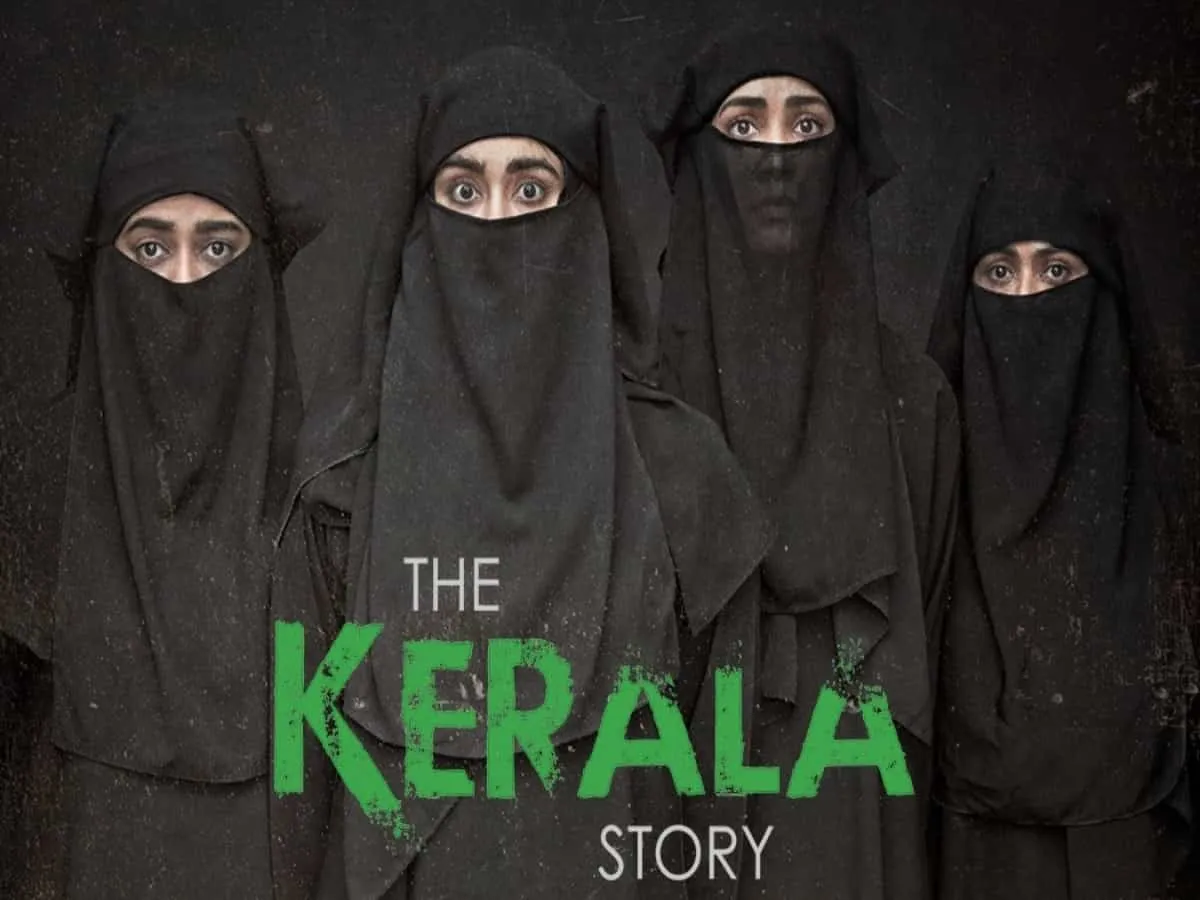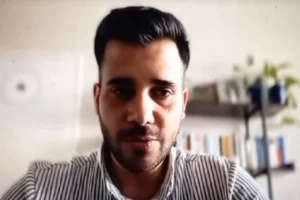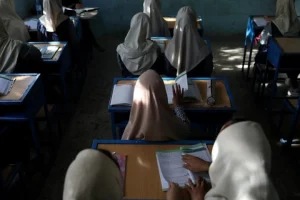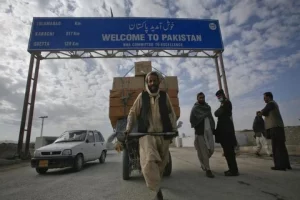The state of West Bengal recently became the first state in the country to ban the movie ‘The Kerala Story’. Theatres in Tamil Nadu have also withdrawn the film. Without going into the merits or the demerits of the ban, suffice it is to say that currently at least three Indian women are lodged in the prisons of Afghanistan on charges of being part of the ISIS group – a UN-proscribed terror organisation.
The film apparently deals with the issue of women being converted to Islam and then recruited into ISIS. Much before The Kerala Story, Netflix came out with the hugely popular ‘Caliphate’, which dealt with the almost same issue.
Russian speakers will know that Russia’s RTR had aired the brilliant tele series also on the same issue – how hapless vulnerable women from different parts of the country were recruited and then trafficked to Iraq and Syria in a similar way – trapped into romantic relations, converted to Islam for the purpose of marriage and then sent to marry or act as sex slaves, or sometimes simply slaves to ISIS fighters. The Russians would know since droves of men from its territory, as well as from those of its neighbouring Central Asian republics had flocked to become members of ISIS and fight for their caliphate.
A reminder to all those who are opposing the film #TheKerelaStory
must see this video how ISIS choose female slavesElderly women were murdered. Married women were separated from the unmarried, an ISIS female checked to see which ones were virgins.Girls over 8 were placed with… pic.twitter.com/RLBGqdGyjZ
— Rahul Jha (@JhaRahul_Bihar) May 9, 2023
Many of the women recruited from these places are still waiting for their fates to be decided in the infamous Al Hol and Al Roj camps. And then there was – possibly the most insightful of all – Netflix series ‘Black Crows’, a Saudi production. This again dealt with the process of the recruitment of men and women – many of the latter looking for husbands and marriage to settle down into and have families – to ISIS. Made for an Arab audience first and foremost, this was the most detailed and astonishingly honest of all those mentioned above. None created any controversy in their home countries.
The Islamic State of Iraq and Syria (ISIS or ISIL), known in Arabic as D’aesh, an abbreviation of Dawlat al-Islamiyah f’al-Iraq wa al-Sham, was a phenomenon because it actually had a state, controlled territory, dismantled the border between Iraq and Syria, controlled oil fields, earned revenue from oil sales in the black market, and levied taxes. At its peak it was said to control over 100,000 km² of land. It also has a well-heeled media and propaganda wing. This has been unlike any of the other Islamist militant groups.
#ISIS brainwashed Muslim women as well. Saudi-UAE joint venture MBC made ‘Gharabeeb Soud’ — #BlackCrows Netflix Series in 2017, to expose the ISIS trap and tactics. pic.twitter.com/vKijYmWWZA
— Zahack Tanvir – ضحاك تنوير (@zahacktanvir) May 5, 2023
In his seminal book ‘Islamic State: The Digital Caliphate’ , one of the best on the ISIS, and based on insider interviews, veteran Arab journalist Abdel Bari Atwan has addressed the phenomenon witnessed across the globe – the call of the IS had turned out to be far more seductive than that of any other jihadi or terror group, including its parent organisation, the Al-Qaeda.
The name itself – The Digital Caliphate – provided the immediate answer – the use of technology and social media has certainly helped the IS in its propaganda and recruitment drive. But while Al-Qaeda and most other known terror groups like the Lashkar-e-Taiba demonstrated a life of only battle and hardships, often far removed from modern civilization, enacted only by men, IS was more inclusive. It made it an “emotionally attractive place where people “belong,” where everyone is a “brother” or “sister.” 41,490 international citizens from 80 countries became affiliated with IS in Iraq and Syria.
Here, women played and were encouraged to play a significant role in it. Of course, women’s radicalization or participation in terrorism is not a new phenomenon. Rajeev Gandhi was assassinated by a woman, and Kashmir still has its Asiya Andrabi, founder of Dukhtaran e Millat, the women’s arm of the Hizbul Mujahideen.
But what distinguished women of ISIS, however, was the global nature of recruits, in which women from almost 80 countries allied themselves with ISIS. In a first such global dataset, the International Centre for the Study of Radicalisation of King’s College London found that 13 per cent (4,761)of these international recruits were women of whom 4,640 (12%) of these were minors. While not in combat, they were assigned the role of caregivers, supporters, and a pillar on which the caliphate is being constructed, an image cleverly promoted on social media. Atwan writes: “A jolly home life is portrayed via Instagram images where fighters play with fluffy kittens and jihadist “poster-girls” proudly display the dishes they have created.” Almost all of the women were recruited through romantic relations.
It was Tunisia, a Muslim country, that first reported this phenomenon of “sexual jihad” as the authorities called it. Around 700 women from Tunisia alone were reported to have travelled to ISIS territory within a year of the group’s emergence. In September, 2013 Interior Minister Lotfi bin Jido said women and girls had travelled both to remote parts of Tunisia as well as to Syria to support militant fighters. The BBC reported that he particularly singled out Syria. “Tunisian girls are swapped between 20, 30, and 100 rebels and they come back bearing the fruit of sexual contacts in the name of sexual jihad and we are silent doing nothing and standing idle,” he told the National Constituent Assembly.
#Tunisia arrests seven women over ISIS propaganda:https://t.co/xNc7K0TkZC pic.twitter.com/JeKD6bld6F
— Al Arabiya English (@AlArabiya_Eng) November 17, 2015
Thereafter, cases were reported from other countries in other regions. We have the case of Shamima Begum of the UK still pending. In 2021 a German ISIS bride was convicted in a German court for crimes against humanity. Allison Fluke-Ekren, a Muslim convert from Kansas, became a military trainer for women in the Islamic State in Syria. Mothers left their children behind in Australia to travel to Syria. Russia reported the highest number of female affiliates – 1,000, followed by Tunisia (700), France (382), China (350) and Morocco (293). For many other countries data is not available or fudged or suppressed because of its sensitive nature.
The International Centre for Counter-Terrorism (ICCT), however, noted between 6 – 23% of affiliates from the EU were converts, where countries such as France noted 25% of female affiliates were converts compared to 20% of male affiliates.
The Central Asian countries have been repatriating and experimenting with deradicalisation programmes for hundreds of their women citizens who had travelled to Iraq and Syria, mostly with or had followed their husbands. In 2019 Kazakhstan repatriated almost 600 Kazakhs —33 men, 156 women and 406 children including 32 orphans — from Syria. Closer home we have the case of Afsha Jabeen from Hyderabad who was arrested by UAE authorities and then deported to India on charges of recruiting for ISIS.
Why was it important to recruit women? Symbolically, the presence and support of women and minors helped legitimise the ISIS state vision – that “jolly home life” – and practically their participation was important in the auxillary support and roles they played in this state-building process. This also lent to the diversity of persons travelling, including whole families.
#TheKeralaStory: A tutorial for those who don’t understand the concept of “representative numbers”👇
The stories of the 3 women in #TheKeralaStoryMovie are representative of the toxic influence on young women of #Islamist terror in #Kerala, fanned for nearly 2 decades by the…
— Minhaz Merchant (@MinhazMerchant) May 9, 2023
The use of captured Yazidi girls as ‘sex slaves’ had also fueled the image of IS where sex and power were in abundance – attracting both men and women alike. Sakharov prize winner and victim survivor of ISIS terror, Lamia Haji Bashar had narrated to this writer her harrowing story: “In Mosul, my sister and I were taken to a hall where many Yazidi girls had been captured and taken. There, we were sold. A Saudi man bought me and my sister. We were taken to Raqqa in Syria. This Daesh fighter raped us for some days and…… Another Daesh fighter bought me at this place and………and continuously brutalized me……….I tried to escape but was caught ……I was punished……Then …..sold to another Daesh fighter who brought me back to Mosul……. I was …….constantly made to work while he continued to rape me. I ran away from him, but once again I was caught…The next Daesh fighter who bought me made car bombs. He taught me to make suicide vests….I again made another attempt to escape…. This time, when I was caught ….. I was brought to the slave market and sold. The next buyer was a doctor, a surgeon from Haweja….”. Bashar’s narrative is testimony to the multiple roles women, even slave women, played in the Islamic State.
The ISIS has been defeated and degraded, the Caliphate destroyed. The destruction of the ISIS Caliphate and the emergence of Covid-19 emergency has helped push back the horrors of ISIS on the backburner for many. But the danger is far from over. With many of the men dead, there are hundreds of ISIS “widows” and children who are stuck in the Al Hol and Roj camps. The refusal of many states to take them back has created a humanitarian emergency with the UN having to step in. Besides, such women and children also constitute a security threat with the potential to carry forward the ISIS ideology.
The organization itself has not been destroyed, it is making attempts to regroup and reestablish itself in Afghanistan, what it calls its Khorasan Province. Worse, its pernicious ideology lives on. That is why states like Uzbekistan and Tajikistan have been expending much effort in repatriating and rehabilitating their citizens from these war zones, after putting them through a deradicalization program. Needless to say, most of those repatriated constitute women and children.
With Afghanistan and the ISIS province of Khorasan envisaging India as part of it, there is no place for complacency.




















